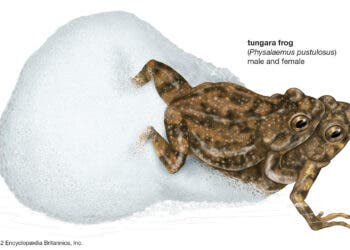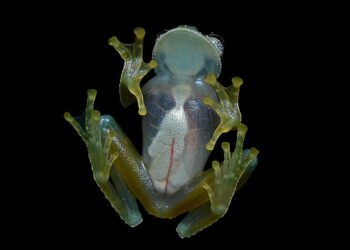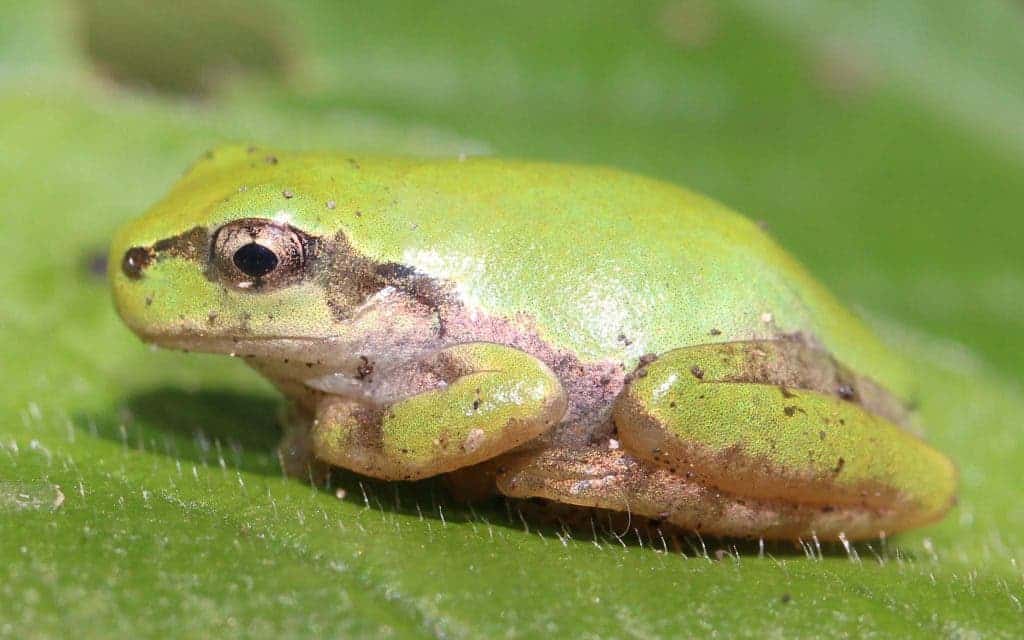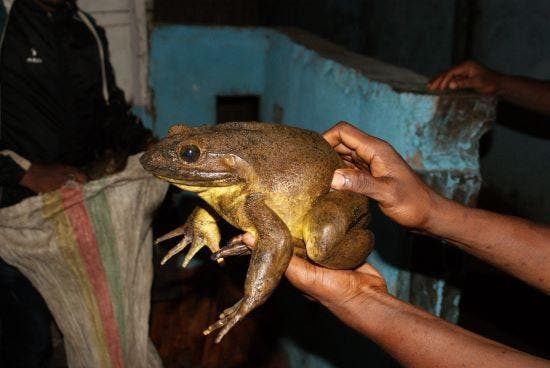
Most frogs you’ll encounter are no bigger than the palm of your hand. Yet over the course of their 140-million-year-old evolutionary history, there has been a great deal of variation in size, which is still evident today among the over 4,800 known species of frogs. These range from thumbnail-size to as large as a whole human foot or housecat, the latter being the case of Cameroon’s Goliath frog (Conraua goliath).
The giant among frogs
Deserving of their name, Goliath frogs can easily grow up to 34 centimeters in length and 3.3 kilograms in weight. Their beefy girth enables them to perform impressive 3-meter jumps and push large rocks to build small dams for their nests. On the flip side, their large size makes them an appealing meaty meal for human hunters and other predators. Due to overhunting, the world’s largest frog is currently classed as endangered.
Before it turns into a giant of the swamp, however, the goliath frog starts off as a tadpole that is no bigger than those of an average frog. However, after an incubation period of about 90 days, the Goliath frog tadpoles keep growing and growing for up to 12 months until they reach maturity. That’s when they are ready to mate — and they do some pretty amazing things for the sake of love.
Goliath frogs build their own ponds, sometimes hurling rocks half their weight
There is still much we don’t know about the Goliath frog. They occupy a relatively small range that stretches from southwestern Cameroon into Equatorial Guinea, a habitat that isn’t easily accessible by humans. What makes them even more elusive is their skittish behavior. If they sense a human, the frogs will quickly jump in the river to hide, so it takes a skillful huntsman to stalk and catch goliath frogs.
That’s why a lot of things about goliath frogs were still unknown, particularly about their mating and nesting habits — until several years ago when researchers looking for Goliaths along a 400-meter stretch of the Mpoula River in western Cameroon stumbled across some peculiar scenery. The shore rocks had empty dips, where leaves, gravel, and other debris had been cleared. It didn’t take long for them to identify multiple other such cleared pools right above the waterline.
Some of these pools were empty, but a few were full to the brim with tadpoles. That’s when Mark-Oliver Rödel, a herpetologist at the Leibniz Institute for Evolutionary and Biodiversity Research, knew he had struck gold.
Between February and May of 2018, Rödel and colleagues monitored 22 breeding sites, 14 of which contained more than 3,000 Goliath eggs each.
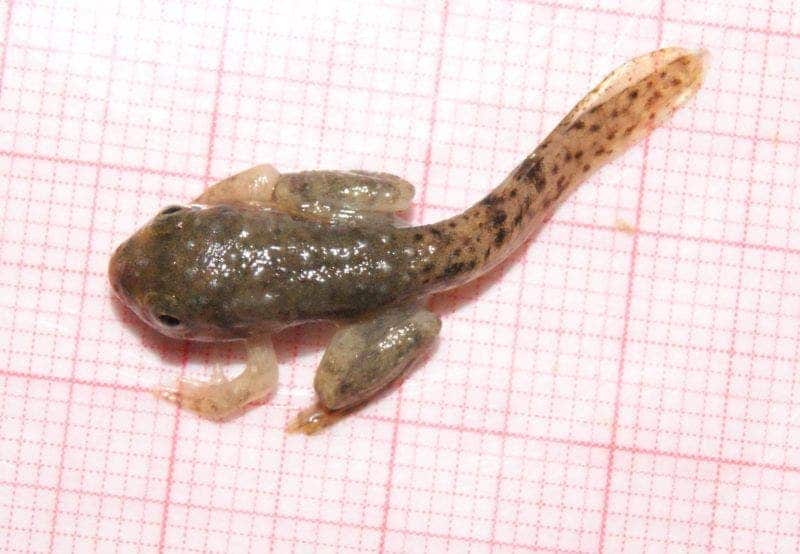
The researchers spoke to locals who reported that the frogs were known for building their own nesting pond. However, they were amazed to find three types of nests when they reviewed the Goliaths’ behavior.
The most simple and common type of nest involved clearing leaves, sediment, and other litter out of rock pools in the river bed, taking advantage of pre-existing structures for breeding. The second type of nest involved enlarging existing shallow ponds. The giant frogs push gravel and other litter out of the way, essentially forming their own mini-dams.
The third and most impressive type of nest saw the frogs use their legs to dig depressions into the riverbanks, which they encircle with large stones and rocks. Some of the rocks the frog hurled to form their own ponds could weigh up to 2 kilograms, more than half of the Goliaths’ weight.
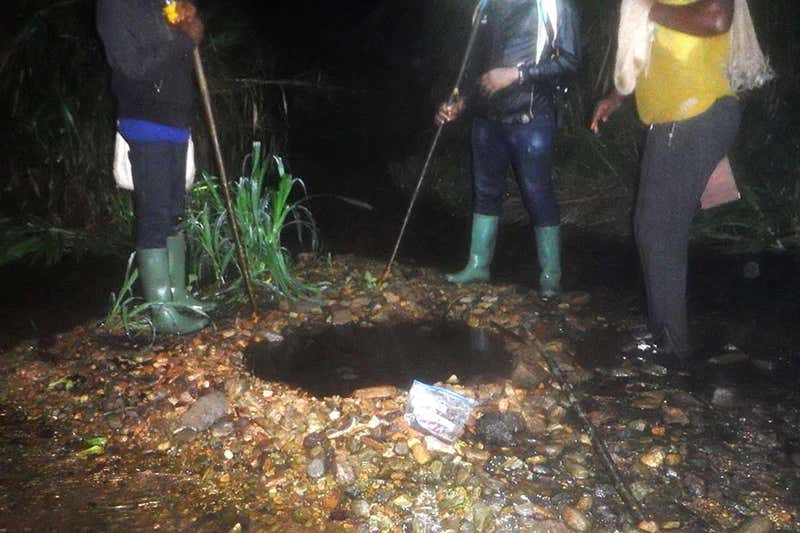
According to the researchers, it is the male Goliaths that do all the heavy digging and lifting. Once the nest is finished, the male will make whistling sounds to attract females. After they mate, the female deposits her eggs, which she’ll guard until the tadpoles are ready to hatch. The authors mention in their study published in the Journal of Natural History that such unusually careful parenting is very rare among frogs.
Digging such a nest is quite physically challenging, and partially explains why Goliaths evolved to grow so large. Rödel and colleagues have plans to set up more camera traps to learn more about Goliaths. They hope to use whatever information they learn to aid conservation efforts meant to protect this iconic species from extinction.
“The fact that we’ve only just discovered these behaviors shows how little we know about even some of the most spectacular creatures on our planet,” Rödel said in a statement. “We hope that our findings, combined with further ongoing research, will improve our understanding of the needs of the Goliath frog so we can help support its continued survival.”

